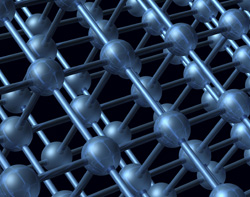Knowledge-based design of nanocomposites for increased durability
Nanomaterials show unique properties not exhibited by their bulk counterparts largely due to their very high surface area to volume ratios. Nanocomposites made up of two or more different materials can further enhance properties through the combination of individual ones and their interactions. They have become the subject of intense research and development as the building blocks of novel devices in virtually every field imaginable. Improvement in durability and strength is of particular interest for materials operating under conditions of extreme environmental conditions, large stresses or repetitive loading cycles. The formation and propagation of cracks can be prevented through the careful control of micro- and nanostructure. Embedding a hard-phase material in a soft matrix results in improved protection but the behaviour of the material under stress is not well understood. Scientists working on the EU-funded MAN project took a simple system of titanium carbide (TiC) nanocrystals embedded in an amorphous carbon (a-C) matrix to study this behaviour in detail through a combination of experimental and theoretical investigations. Molecular dynamics simulations of deformation elucidated the behaviours associated with crack formation and propagation in response to stress. Taken into account were the directional dependence related to both the stress direction as well as the crack orientation with respect to the materials boundaries. Overall, project scientists demonstrated that the propagation of cracks in the a-C phase (more brittle than the TiC phase) is hindered by the presence of TiC. Continued work is expected to result in delineation of the optimal phase ratio and grain shape for the highest fracture toughness in nanocomposites. MAN outcomes are applicable in most fields where durability is a consideration. These include adverse environmental conditions, when materials are subject to high stresses, or under repetitive loading cycles.







